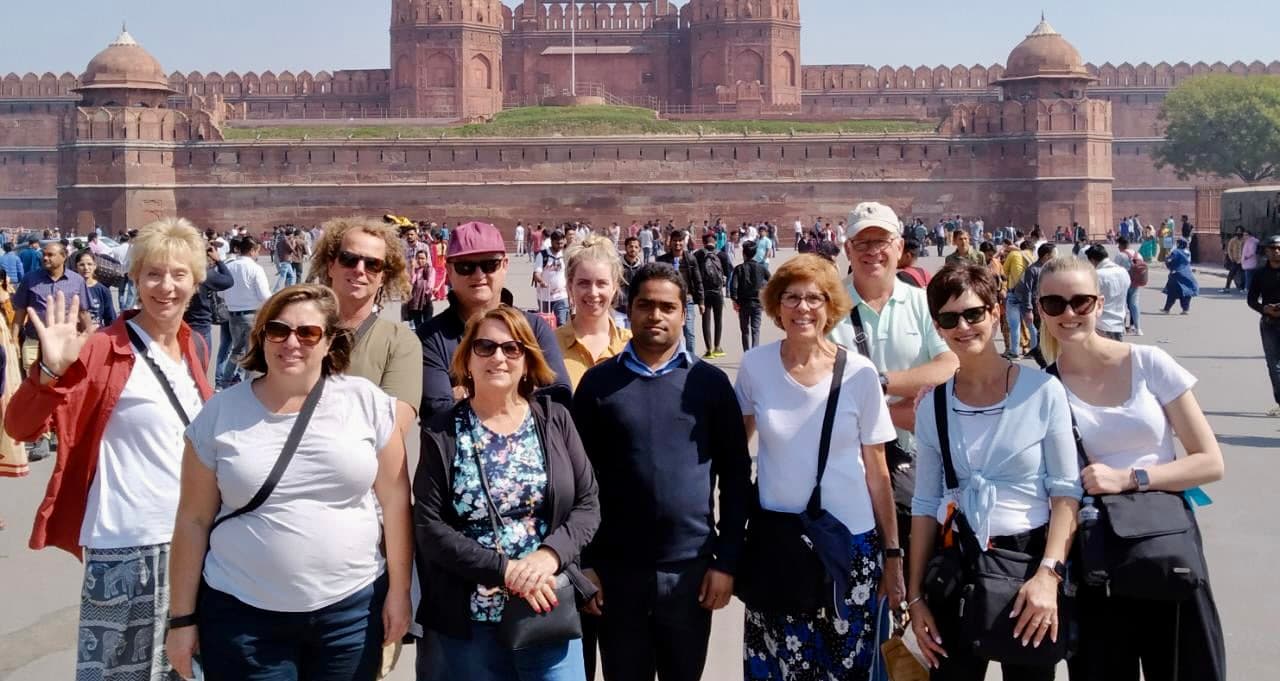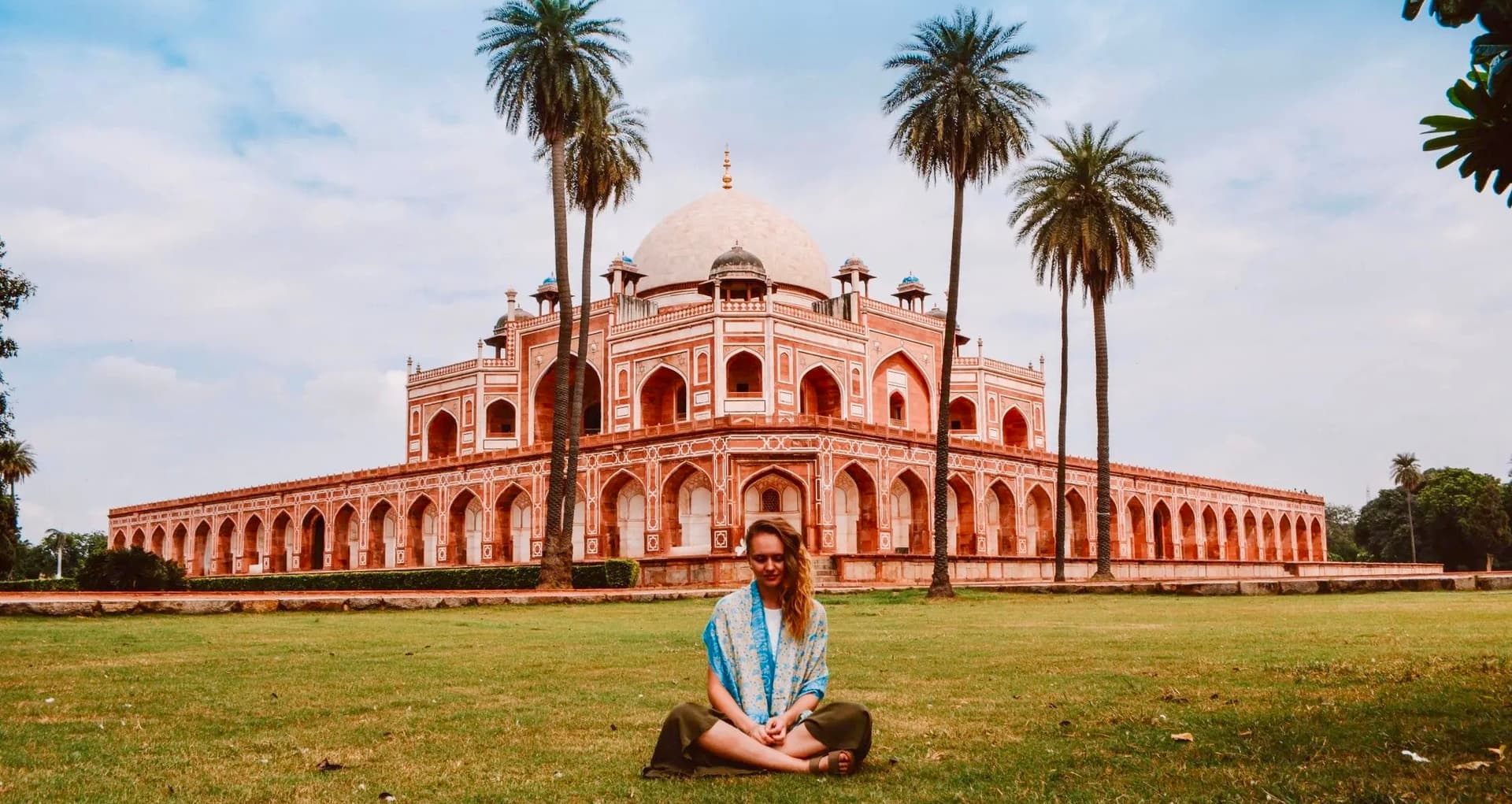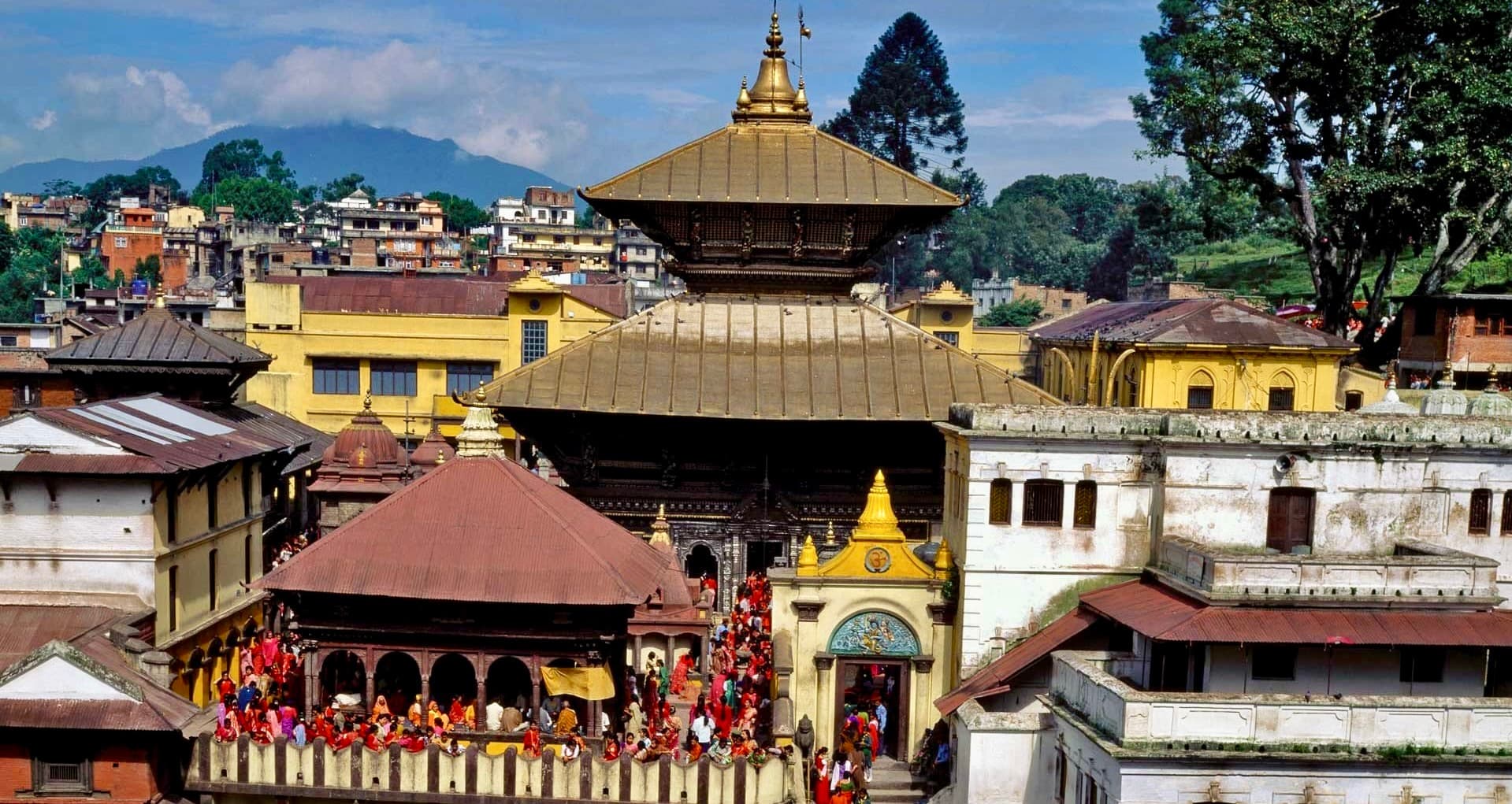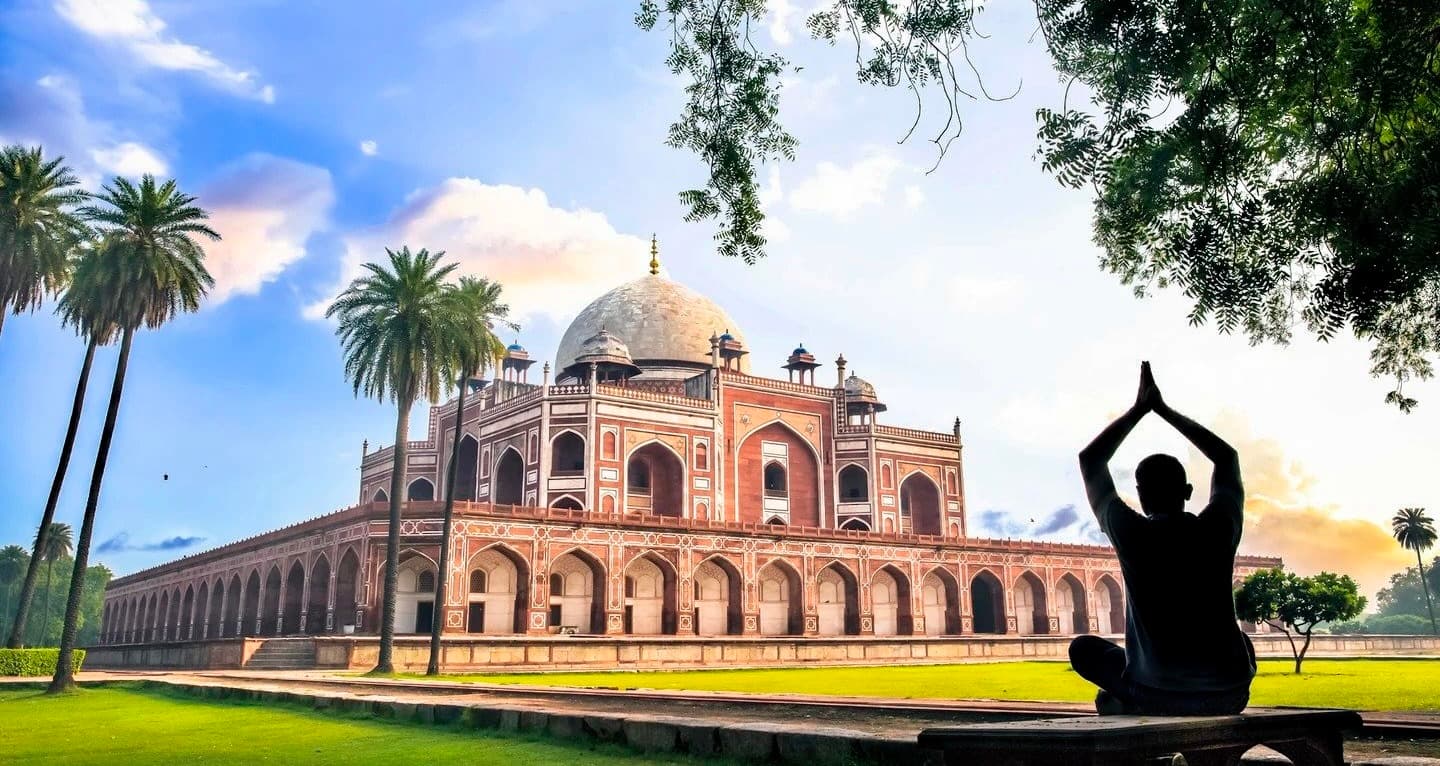Features of the Golden Triangle Tour of India and Nepal
Diverse Cultural Immersion
The Golden Triangle Tour of India and Nepal isn’t just a journey across cities and landmarks; it's a profound cultural odyssey that unveils the rich tapestry of traditions, rituals, art, and lifestyles rooted deeply in the history of these two neighboring nations.
-
Historical Confluence: The tour introduces travelers to the confluence of cultures. In India, one witnesses the synthesis of Mughal and Rajput heritages, particularly in cities like Delhi and Jaipur. Delhi, with its sprawling Red Fort and Jama Masjid, represents the zenith of Mughal architecture, while Jaipur's Amber Fort and City Palace echo the grandeur of Rajputana royalty. Meanwhile, in Agra, the Taj Mahal stands as an epitome of eternal love and Mughal artistry.
-
Spiritual Encounters: Nepal, known as the land of temples and stupas, provides a deep dive into Hinduism and Buddhism. The stupa of Swayambhunath or the Pashupatinath Temple in Kathmandu is not just an architectural marvel but an active center of spirituality, with monks, devotees, and rituals being an everyday sight.
-
Lifestyles and Traditions: The journey through local bazaars and streets, whether it's Chandni Chowk in Delhi or the markets of Kathmandu, offers a glimpse into the daily lives of locals. Here, one can observe age-old trades, artisanal crafts, and traditional ways of life that coexist with modernity.
-
Festivals and Celebrations: If timed right, travelers might get to witness and partake in local festivals. India's colorful festivals like Diwali or Holi and Nepal's vibrant celebrations like Dashain or Tihar offer immersive experiences where one can understand the significance, rituals, and community bonds formed during these times.
-
Culinary Experiences: Food is an integral part of culture, and this tour promises a gastronomic journey. From the spicy street food of Delhi, rich curries of Jaipur, and Mughlai delights in Agra to the traditional Dal Bhat in Nepal or the delectable momos of Kathmandu, each dish narrates a cultural story.
-
Art and Craft: The region boasts a rich tradition of arts and crafts. Jaipur's block printing, Agra's marble inlay work, and Nepal's Thangka paintings are a testament to the skilled craftsmanship passed down through generations.
-
Language and Interaction: Each region has its dialect and language. Interacting with locals, understanding their greetings, and maybe picking up a few phrases can be both fun and enriching.
-
Traditional Performances: Cultural dances and music performances, especially in Nepal, offer insights into stories, legends, and histories that have shaped the local cultures.
The Golden Triangle Tour of India and Nepal is a celebration of diversity. It's an invitation to step into a world where past and present coalesce, where tales of emperors and kings intertwine with everyday stories of the common man, and where every street, temple, or monument has a cultural tale waiting to be told.
Historical Exploration
The essence of the Golden Triangle Tour of India and Nepal lies in its deep dive into the annals of history, tracing the legacy of empires, kingdoms, and ancient civilizations that once flourished in this part of the world.
-
Delhi's Mughal Legacy: The very heart of India's capital, Delhi, beats with stories of the Mughal Empire. The Red Fort stands as a colossal red sandstone fortress symbolizing Mughal power and opulence. Close by, Jama Masjid, one of India's largest mosques, speaks of the deep Islamic influence. Humayun’s Tomb, a UNESCO World Heritage site, is a precursor to the architectural style of the Taj Mahal.
-
Jaipur’s Rajputana Grandeur: As one wanders through Pink City, the capital of Rajasthan, they are greeted by grand palaces and forts. Amber Fort, atop a hill, showcases a blend of Rajput and Mughal architecture, while the City Palace in the heart of the city narrates tales of the royal family of Jaipur. The iconic Hawa Mahal, with its unique façade, is a marvel of Rajputana architecture.
-
Agra and the Tale of the Taj: Agra, once the capital of the Mughal Empire, houses the eternal symbol of love: the Taj Mahal. This white marble mausoleum, built by Emperor Shah Jahan for his beloved wife Mumtaz Mahal, remains a testament to the pinnacle of Mughal architectural splendor. Agra Fort, another UNESCO site, is a robust fortress displaying the might of the Mughal Empire.
-
Kathmandu's Ancient Kingdoms: Stepping into Nepal's capital, Kathmandu, feels like opening a history book. The Kathmandu Valley was once divided into three kingdoms: Kathmandu, Patan, and Bhaktapur. Each of these cities has its Durbar Square, filled with palaces, temples, and courtyards that tell tales of the Malla kings. The centuries-old Swayambhunath and Boudhanath stupas give insights into Buddhist influences.
-
Pokhara’s Geological & Archaeological Wonders: While predominantly known for its natural beauty, Pokhara also offers historical glimpses with sites like the ancient Bindhyabasini Temple and the Gupteshwor Cave which is believed to be around 500 years old.
-
Chitwan’s Tribal Histories: Beyond the wildlife, Chitwan also holds traces of the ancient Tharu tribe. The local Tharu villages and cultural performances offer insights into their rich history and traditions.
Throughout this tour, travelers aren't just sightseeing; they're time-traveling. Every monument, fort, temple, and stupa holds stories of conquests, love, spirituality, and civilization. The historical exploration of the Golden Triangle Tour of India and Nepal allows travelers to transcend time and immerse themselves in tales that shaped the subcontinent.
Natural Beauty
Woven into the fabric of the rich history and vibrant cultures of India and Nepal is the incredible natural beauty that these regions offer. The Golden Triangle Tour of India and Nepal not only highlights the architectural marvels and cultural wonders but also showcases the breathtaking landscapes, serene lakes, dense forests, and magnificent panoramas that make this journey visually and spiritually fulfilling.
-
Delhi's Green Lungs: Amidst the urban sprawl of Delhi, the Lodi Gardens and the Garden of Five Senses offer tranquil respites, presenting a blend of nature's tranquility and Mughal architecture.
-
Jaipur's Majestic Backdrops: The Pink City, Jaipur, isn’t just about forts and palaces. The Aravalli Range, one of the world's oldest mountain ranges, cradles the city, offering panoramic views, especially from vantage points like Nahargarh Fort.
-
Agra's Yamuna Riverside: The calm Yamuna River flows beside the Taj Mahal, adding a serene dimension to this iconic monument. The Mehtab Bagh across the river provides not just a vantage point for the Taj but also a peaceful natural setting.
-
Kathmandu Valley’s Diverse Terrains: Encircled by rolling green hills and dotted with terraced farms, Kathmandu is more than just its urban core. The outskirts of the valley present a lush tapestry of forests, rivers, and traditional farmlands.
-
Pokhara's Natural Wonders: Often referred to as the 'Jewel of the Himalayas', Pokhara is nature's masterpiece. The tranquil Phewa Lake, set against the backdrop of the Annapurna range, offers serene boat rides. The cascading Devi's Fall, the mysterious Gupteshwor Cave, and the panoramic views from the World Peace Pagoda further accentuate Pokhara's natural beauty.
-
Chitwan's Dense Jungles: Moving from the urban and mountainous settings, Chitwan National Park plunges travelers into the heart of Nepal's Terai jungles. This UNESCO World Heritage site is a haven for wildlife enthusiasts, offering sightings of one-horned rhinos, Bengal tigers, and various bird species amidst dense forests, grasslands, and wetlands.
The Golden Triangle Tour is an exploration of contrasts – from bustling cities with their pockets of green oases to the calm lakesides with towering mountain silhouettes, from arid landscapes dotted with historical forts to dense jungles echoing with the calls of the wild. The myriad natural settings encountered throughout this journey add layers of depth and beauty to the traveler's experience, making it a holistic communion with both culture and nature.
Guided Sightseeing
An intricate blend of history, culture, and natural beauty defines the Golden Triangle Tour of India and Nepal. But to truly understand the tales behind every monument, the significance of each ritual, or the marvels of the natural landscapes, there’s nothing quite like having an experienced guide illuminate the journey. The guided sightseeing aspect of this tour is the bridge between the traveler and the intricate tapestry of stories and experiences these regions have to offer.
- Delhi’s Historical and Architectural Chronicles: With a guide by your side, wander through the lanes of Old Delhi, discovering the stories behind the Red Fort, Jama Masjid, and Chandni Chowk. In New Delhi, uncover the colonial legacy of India Gate, Rashtrapati Bhavan, and the Parliament House. Each monument becomes a chapter in the city's history, narrated eloquently by the guide.
-
Jaipur’s Royal Narratives: The Pink City is replete with tales of royalty, valor, and romance. A guided tour through Amber Fort, City Palace, Jantar Mantar, and Hawa Mahal not only presents their architectural grandeur but also delves into the lives of the Rajput kings and their legendary tales.
-
Agra’s Mughal Love Stories: The Taj Mahal isn't just a beautiful monument; it's a symbol of eternal love. With a guide, the love story of Shah Jahan and Mumtaz Mahal comes alive. Similarly, the histories of Agra Fort and Fatehpur Sikri transform from mere bricks and stones to sagas of empires, ambitions, and intrigues.
-
Kathmandu’s Spiritual Epics: Guided tours in Kathmandu offer a deep dive into Nepal’s rich spiritual heritage. The stupa of Swayambhunath, Pashupatinath Temple, or the intricacies of Patan's Durbar Square, when explained by a guide, offer deeper insights into the region’s Buddhist and Hindu confluences.
-
Pokhara’s Scenic Explanations: While Pokhara’s natural beauty can be self-evident, a guide can enhance the experience by explaining the geology of the Davis Falls, the legend behind the Tal Barahi Temple in the middle of Phewa Lake, or the historical significance of Bindhyabasini Temple.
-
Chitwan’s Wild Adventures: Navigating the dense jungles of Chitwan becomes an enlightening experience with a guide. Their expertise not only helps in spotting diverse wildlife but also in understanding their behaviors, the park’s conservation efforts, and the rich ecosystem.
Guided sightseeing on the Golden Triangle Tour of India and Nepal isn’t merely about explanations; it's about enriching the travel experience. It’s about ensuring that travelers don’t just see, but also understand and feel the essence of every place they visit, forging deeper connections with the lands they traverse.
Comfortable Accommodations
The Golden Triangle Tour of India and Nepal, while abundant in historical, cultural, and natural treasures, also recognizes the importance of rest and rejuvenation. After days filled with exploration and adventure, the tour ensures that travelers are offered a cocoon of comfort, luxury, and tranquillity. The accommodations chosen in this tour seamlessly combine local aesthetics with modern comforts, ensuring that guests experience the essence of the region while enjoying all contemporary amenities.
-
Delhi’s Urban Elegance: Whether it’s the 3-star Intercity or the plush 4-star ITC Welcome Hotel, accommodations in Delhi reflect a perfect balance of Indian traditions and modern sophistication. Strategically located, these hotels ensure easy accessibility to major landmarks while offering a serene escape from the city's hustle.
-
Jaipur’s Regal Charm: In Jaipur, establishments like the Rajputana Haveli and the Lemon Tree Premiere channel the city's regal heritage. They often incorporate Rajasthani art and architecture, allowing guests to experience the grandeur of the Rajput kings, all while enjoying modern amenities like spas, rooftop restaurants, and swimming pools.
-
Agra's Mughal-Inspired Comfort: Accommodations in Agra, whether it’s the 3-star Parador or the lavish 4-star Crystal Sarovar Premiere, often draw inspiration from the city’s Mughal past. Intricate designs, marble interiors, and curated gardens echo the aesthetics of the nearby Taj Mahal, creating a romantic and historical ambiance.
-
Kathmandu's Cultural Retreats: Hotels like the Holy Himalayas and the upscale Mulberry provide travelers with a sanctuary in the heart of Kathmandu. These accommodations often feature traditional Nepalese art, courtyards reminiscent of Newari architecture, and views of the surrounding hills and stupas, ensuring guests are always connected to Nepal’s cultural heartbeat.
-
Pokhara’s Lakeside Bliss: Hotels in Pokhara, such as the Hotel Lake Star or the luxurious Mount Kailash Resort, usually boast lakeside locations or mountain views. The tranquil setting of Phewa Lake, combined with the backdrop of the Annapurna range, ensures that guests wake up to nature's splendor every day.
-
Chitwan's Jungle Lodges: Chitwan accommodations, from Hotel Parkland to the more lavish Hotel Seven Star, offer unique jungle lodge experiences. Surrounded by lush greenery and often designed using local materials, these accommodations provide immersive wildlife experiences, complete with nature walks, campfires, and cultural performances.
The choice of accommodations in the Golden Triangle Tour of India and Nepal is reflective of the destinations themselves - rich in local flavor, steeped in history, and always welcoming. Each hotel or lodge is chosen not just as a place to sleep, but as an integral part of the journey, ensuring travelers get a comprehensive and comfortable experience.
Best Time to Visit the Golden Triangle Tour of India and Nepal
Embarking on the Golden Triangle Tour of India and Nepal is a journey through diverse landscapes, cultures, and historical epochs. To maximize the experience, choosing the right time to visit is crucial. Factors like weather, local festivals, and regional events can significantly influence one's travel experience. Here's a guide to the ideal times to embark on this captivating tour:
India (Delhi, Jaipur, Agra)
Winter (October to March):
- Pros: This is generally considered the best time to visit the Golden Triangle cities. The weather is cool and pleasant, making it ideal for sightseeing and outdoor activities.
- Cons: It can be chilly in the early mornings and nights, especially in December and January. Also, due to the peak tourist season, expect crowds and higher prices.
Summer (April to June):
- Pros: Fewer tourists, which means less crowded attractions and potentially better hotel rates.
- Cons: Temperatures can soar above 40°C (104°F). Sightseeing can be uncomfortable during mid-day.
Monsoon (July to September):
- Pros: The landscape turns lush and green, especially in the countryside. A different aesthetic appeal for photographers.
- Cons: Humidity is high, and sporadic heavy rains can affect outdoor activities. Not the best time for sightseeing.
Nepal (Kathmandu, Chitwan, Pokhara)
Autumn (September to November):
- Pros: Clear skies and moderate temperatures make this the most popular time to visit. The major festivals of Dashain and Tihar also fall during this period.
- Cons: During peak tourist season, some places might be crowded.
Winter (December to February):
- Pros: Cooler temperatures, clearer views of the Himalayas, and fewer tourists.
- Cons: Chitwan might get cold, and early morning and evening temperatures in Kathmandu and Pokhara can drop significantly. High-altitude treks might be off-limits due to snowfall.
Spring (March to May):
- Pros: Second most popular tourist season with moderate temperatures. Rhododendron forests bloom in hilly areas.
- Cons: Hazy skies might obscure some mountain views, especially in late spring.
Monsoon (June to August):
- Pros: Lush landscapes and fewer tourists. Ideal for botanists and researchers.
- Cons: Frequent rains, leeches in trekking trails, and possible flight delays due to weather. Landslides may affect travel in hilly areas.
While each season has its own charm and offers unique experiences, the post-monsoon and spring seasons stand out as the most favorable times to undertake the Golden Triangle Tour of India and Nepal. These periods ensure pleasant weather, clear views, and the added bonus of local festivals and events, enhancing the richness of the journey.
Entrance fees are required for the Golden Triangle Tour of India and Nepal
The Golden Triangle Tour of India and Nepal covers various iconic landmarks, many of which have entrance fees. While these fees can change over time due to various factors like inflation, maintenance projects, and tourism policies, here is an approximate list of some of the key sites and their associated fees:
India:
Delhi:
- Red Fort (Lal Qila): ₹550 for foreigners.
- Humayun's Tomb: ₹600 for foreigners.
- Qutub Minar: ₹600 for foreigners.
- India Gate: Free, but there's a fee for the nearby museums.
- Lotus Temple: Free.
Agra:
- Taj Mahal: ₹1300 for foreigners.
- Agra Fort: ₹650 for foreigners.
- Fatehpur Sikri: ₹610 for foreigners.
Jaipur:
- Amber Fort: ₹550 for foreigners.
- City Palace: ₹700 for foreigners.
- Jantar Mantar: ₹250 for foreigners.
- Hawa Mahal: ₹200 for foreigners.
Nepal:
Kathmandu:
- Swayambhunath (Monkey Temple): NPR 200.
- Pashupatinath Temple: NPR 1000 for foreigners (entrance for non-Hindus is restricted to the outer areas).
- Boudhanath Stupa: NPR 400.
- Patan Durbar Square: NPR 1000.
- Kathmandu Durbar Square: NPR 1000.
Pokhara:
- Devi's Fall: NPR 30.
- Gupteshwor Cave: NPR 100.
- International Mountain Museum: NPR 500.
Chitwan:
- Chitwan National Park: The entrance fee for foreigners is approximately NPR 2000, but this can vary depending on the type of activities and duration of the visit.
Note: The prices above are approximate and may have changed. Additionally, there are often separate, lower prices for SAARC country citizens in both India and Nepal. Always check the current prices before planning your visit.
Important Notes on the Golden Triangle Tour of India and Nepal
The Golden Triangle Tour of India and Nepal promises a captivating blend of cultural, historical, and natural exploration. To ensure a seamless experience, here are some vital notes to consider:
Visa Requirements:
- India: Most nationals require a visa to enter India. It's advisable to apply for an e-visa online before traveling.
- Nepal: A visa on arrival is available for most nationals at Tribhuwan International Airport, Kathmandu. Check the latest visa policies based on your nationality.
Health and Vaccinations:
- Consult your doctor for any recommended vaccinations before traveling.
- While malaria is rare in these regions, carrying a mosquito repellent can be beneficial.
- Ensure you have comprehensive travel insurance that covers medical emergencies.
Cultural Sensitivity:
- Both India and Nepal have rich cultural and religious traditions. Dress modestly, especially when visiting temples, mosques, or other religious sites.
- Always ask for permission before photographing people or religious ceremonies.
Currency:
- India: The official currency is the Indian Rupee (INR). ATMs are widely available in cities, but always carry some cash while visiting remote areas.
- Nepal: The official currency is the Nepalese Rupee (NPR). Like in India, ATMs are found in cities, but it's advisable to have cash in hand in less urban areas.
Weather: As discussed in the 'Best Time to Visit' section, weather conditions vary. Always check the weather forecast before your trip and pack accordingly.
Tipping: While not mandatory, tipping is appreciated for good service in both countries, especially for guides, drivers, and hotel staff.
Safety: Both India and Nepal are generally safe for tourists. Always be vigilant in crowded places, avoid isolated areas after dark, and keep your belongings secure.
Connectivity: Mobile and internet connectivity is good in cities. For remote areas, especially in Nepal, connectivity might be sporadic. Consider getting a local SIM card for better coverage.
Local Cuisine: Both countries offer rich and diverse culinary experiences. If you're not used to spicy food, request milder versions. Always drink bottled water and avoid consuming street food from vendors that seem unhygienic.
Language: English is widely understood in tourist areas. Knowing a few local phrases can be endearing and useful.
Shopping: Both India and Nepal offer unique handicrafts, textiles, and artifacts. However, be prepared to bargain in local markets. Make sure to check the authenticity of high-value items like gems or antiques.
Transport Delays: Traffic congestion is common in cities. Also, flights, especially in Nepal, might face delays due to weather conditions. Always keep some buffer time in your schedule.
By keeping these notes in mind and staying well-prepared, you'll ensure that your Golden Triangle Tour of India and Nepal is not just memorable but also smooth and hassle-free. Always remember to travel with an open heart and mind, embracing the unique experiences that come your way.
If you need any further information, please contact us by email: at [email protected], Phone: at +977- 985 100 5129 (WhatsApp)




.jpg&w=1920&q=75)





.jpeg&w=1920&q=75)
.jpeg&w=1920&q=75)
.jpeg&w=1920&q=75)
.jpeg&w=1920&q=75)
